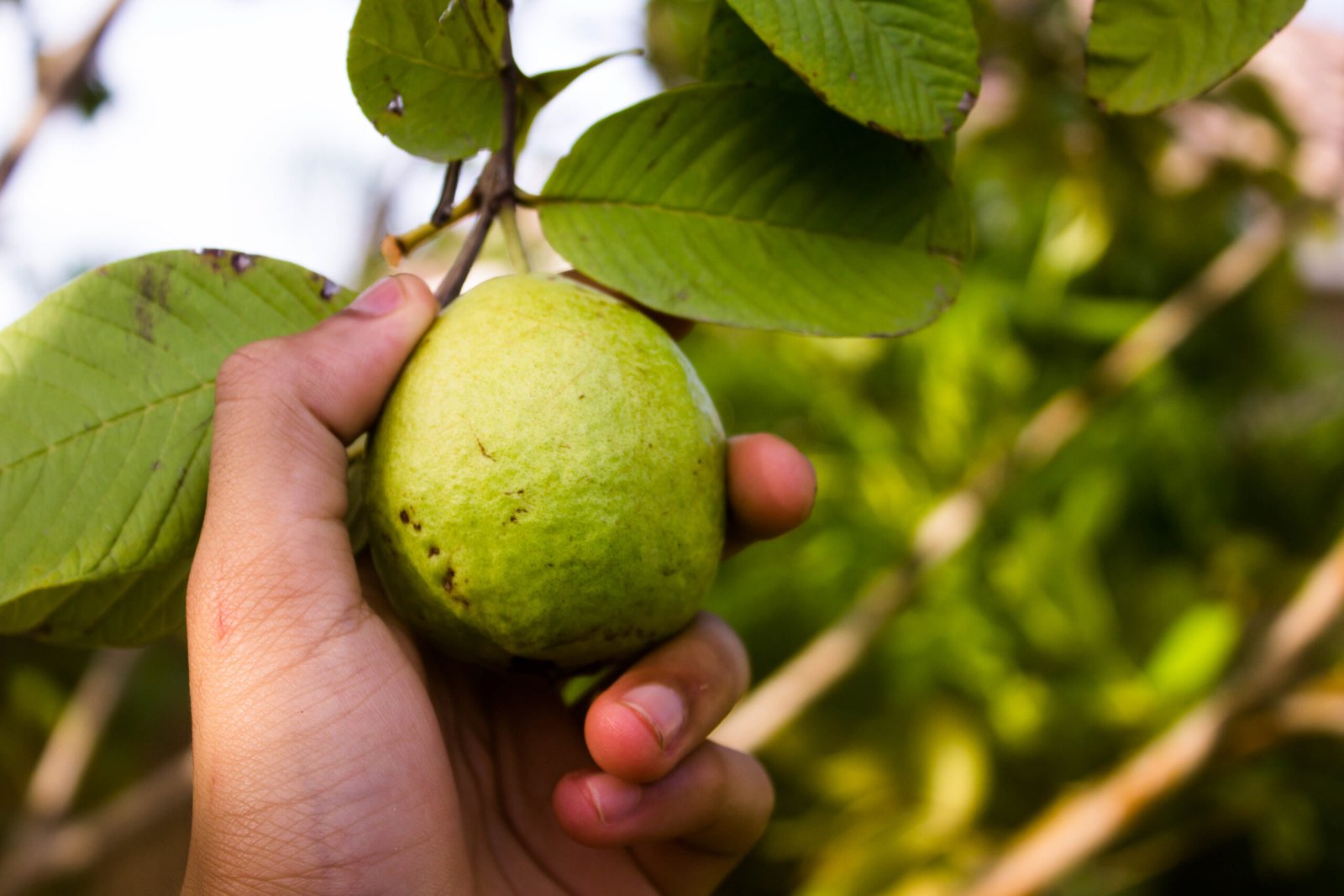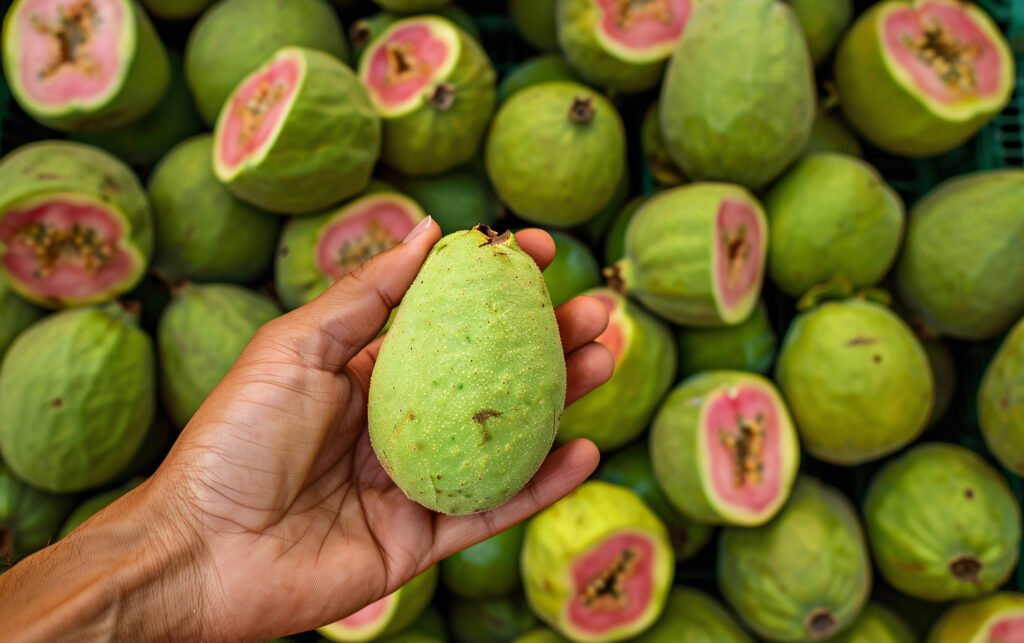Latest News
Guava Cultivation in India | A Profitable Fruit Crop for Small and Marginal Farmers

Guava cultivation is emerging as one of the most profitable fruit farming options in India. Known as the “apple of the tropics,” guavas thrive in a variety of climates and need little care. Growers in Tamil Nadu, Maharashtra, Bihar, and Uttar Pradesh are making a consistent living from guava cultivation, whether in private orchards or on commercial estates. With topics including climate, soil, varietals, planting, care, harvest, and market possibilities for both fresh fruit and value-added products, this site provides a comprehensive reference to guava farming.
India’s Growing Interest in Guava cultivation
Tropical fruit crops like guava (Psidium guajava) are in great demand because of their:

- rich nutritional profile (antioxidants, fibre, and vitamin C)
- high output per acre.
- Flexibility in various agroclimatic zones
- fruiting in two to three years, short gestation period
- many crops every year.
As an alternative to low-return or water-intensive crops like sugarcane and rice, many farmers have been growing guavas in recent years.
Guavas grow best in tropical and subtropical regions, which makes them ideal for cultivation. It’s partial to:
- 23°C to 35°C in temperature
- 1000–2000 mm of rain each year
- To improve fruiting, full sun
- Some types of mild frost resistance
The best types of soil are sandy loam or well-drained loamy soils.
- Soil pH range: 6.0 to 7.5
- Stay away from soggy or salty soils.
- Before planting, the ground should be well ploughed.
Popular Guava Varieties Grown in India
| Variety Name | Features | Region Grown |
|---|---|---|
| Allahabad Safeda | White flesh, sweet, round | Uttar Pradesh, Bihar |
| Lucknow-49 (Sardar) | Round, juicy, high yield | Punjab, Maharashtra |
| Lalit | Red pulp, attractive color | Bihar, Uttar Pradesh |
| Shweta | White flesh, medium-sized | Gujarat, MP |
| Arka Mridula | Uniform fruits, soft texture | Karnataka, Telangana |
Space and Planting Guavas
- Season for planting: February–March (spring) or July–September (monsoon)
- High-yielding trees should be spaced 6 m × 6 m, while regular kinds should be 5 m × 5 m.
- Using 1x1x1 metre trenches filled with topsoil, neem cake and FYM (farmyard manure) is the planting technique.
- Though they can withstand dryness, guavas produce more when they are regularly watered throughout blooming and fruiting.
Taking Good Care of Guava Orchards
🌿 Fertilisation and Manuring
- 20 to 25 kg of well-rotted FYM annually per plant
- Divide up the NPK application based on the soil test.
- Micronutrient spraying on the leaves (zinc, boron) improves the quality of the fruit.
✂️ Pruning Seasonal pruning promotes improved fruiting and canopy control.
Following harvest, remove any unhealthy or dead branches.
- Management of Pests and Diseases
Common insects: mealybugs and fruit flies
Typical illnesses: anthracnose and Wilt
Measures of Control:
- Make use of pheromone traps.
- For organic defence, mist with neem oil or trichoderma.
- Preserve field cleanliness
Harvest and Production
In two and a half to three years, the first commercial crop follows.

Every two years, guava plants provide fruit:
- August through September is the rainy season.
- Winter crop: November through January (better quality and pricing on the market)
The mean yield:
- Under excellent care, mature orchards yield 10–20 tonnes/acre.
- Fruit is picked when it is completely developed yet still firm.
After-Harvest Promotion
- Classifying and evaluating according to ripeness and size
- Precooling and meticulous packaging extend shelf life.
- Sell via neighbourhood FPOs, supermarkets, or mandis.
- Increased demand for processed goods such as dry slices, pulp, guava juice, and jam
Profitability and Estimated Costs
The first outlay of funds
Planting + inputs: Rs. 60,000–80,000/acre
Annual upkeep expenses:
Rs. 25,000–35,000 per acre
Net profits:
After the third year, it costs between Rs. 1.5 and 2 lakhs per acre;
In metropolitan and international markets, organic guavas command greater prices.
Assistance & Programs from the Government
Assistance for guava plants is provided by MIDH (Mission for Integrated Development of Hortisphere).
- In PMKSY, drip irrigation is supported.
- Pack homes, vermi compost units, and planting materials are all eligible for subsidies.
- For technical assistance, farmers should get in touch with their Kirshi Vigyan Kendra (KVK) or Horticulture Department.
Conclusion
Guava farming is sustainable in addition to being lucrative. For small and marginal farmers across India, its minimal input requirements, drought resilience, and rising market demand make it the perfect crop. Guava cultivation may improve food security, provide steady revenue, and lead to agribusiness endeavours with the right marketing, care, and variety selection.













